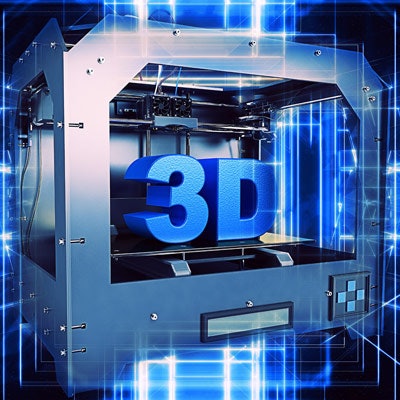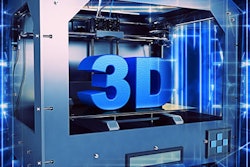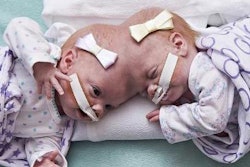
A 3D-printed skull base provided surgical residents with the opportunity to simulate cleft lip repair on a physical model -- a more interactive alternative to the standard practice of training in virtual reality, according to an article published online November 1 in JAMA Facial Plastic Surgery.
"For training in cleft lip repair, adult cadaveric simulators lack accurate representation of this predominately pediatric procedure," wrote senior investigator Dr. David Zopf and colleagues from the University of Michigan. As a result, current "cleft lip repair educational devices are almost exclusively virtual reality-based."
Exploring the feasibility of a more hands-on approach to training, the group obtained a 3D virtual model of a neonatal skull base from the U.S. National Institutes of Health (NIH) 3D Print Exchange. This model was based on the CT scans of an infant patient who had a cleft lip; NIH researchers formatted the scans using open-source image processing tools, Kai Zhang, a research engineer at the NIH 3D Print Exchange, told AuntMinnie.com.
Zopf and colleagues modified the 3D model with computer-aided design software (Materialise 3-matic, Materialise) and then produced a 3D-printed skull base model using a 3D printer. They also cured dyed silicone into the model to replicate the texture of skin on the model's surface. The final 3D-printed model served as a prototype for the purposes of simulating cleft lip repair. Final manufacturing costs amounted to approximately $16.
Five plastic surgeons independently evaluated the quality of the 3D-printed model by repairing the model's cleft lip following their choice of technique. The surgeons rated the simulation on a four-point scale, with a score of 4 indicating a "highly realistic" experience that provided a "great deal of value."
Overall, the cleft lip repair simulation demonstrated high fidelity to actual surgical experience in terms of the 3D-printed model's similarity to a real patient's face, the realism of the experience it offered, the value it offered trainees, and its readiness for use.
| Ratings for cleft lip repair simulation with a 3D-printed model | |
| Fidelity to real physical attributes | 3.2 |
| Fidelity to real surgical experience | 3.1 |
| Value as a training tool | 3.7 |
| Relevance to surgical training | 3.4 |
"This model may accelerate and enhance trainees' exposure to the execution of this advanced procedure," the authors wrote. "The use of readily available materials, compatibility with standard surgical equipment, and the reusable-replaceable modular design result in a relatively low overall cost, making it accessible to many training environments in the future."
3D printing technology has a strong potential to facilitate not only patient-specific surgical planning for infant patients requiring cleft lip repair but also caregiver education as well, they noted.



















